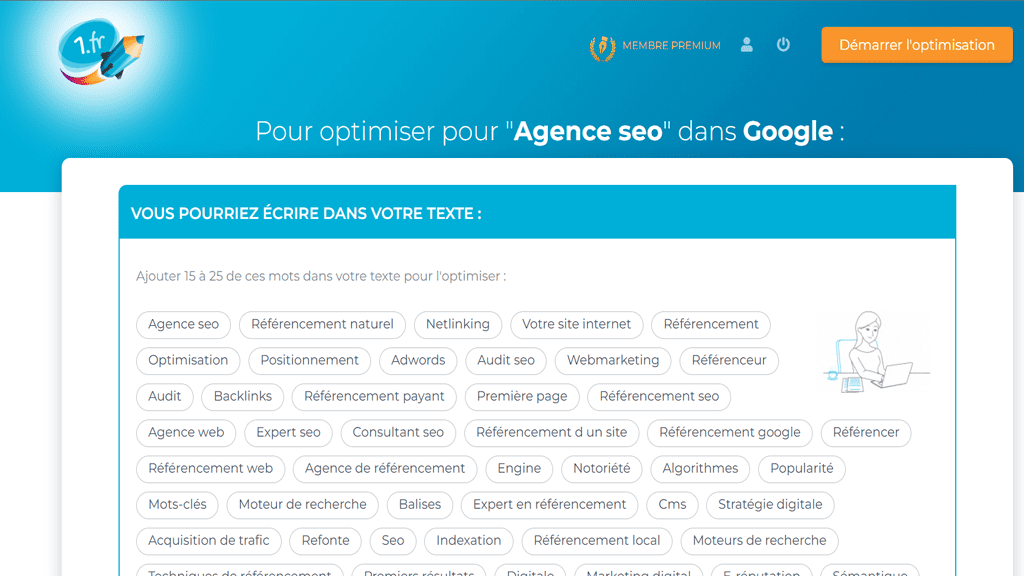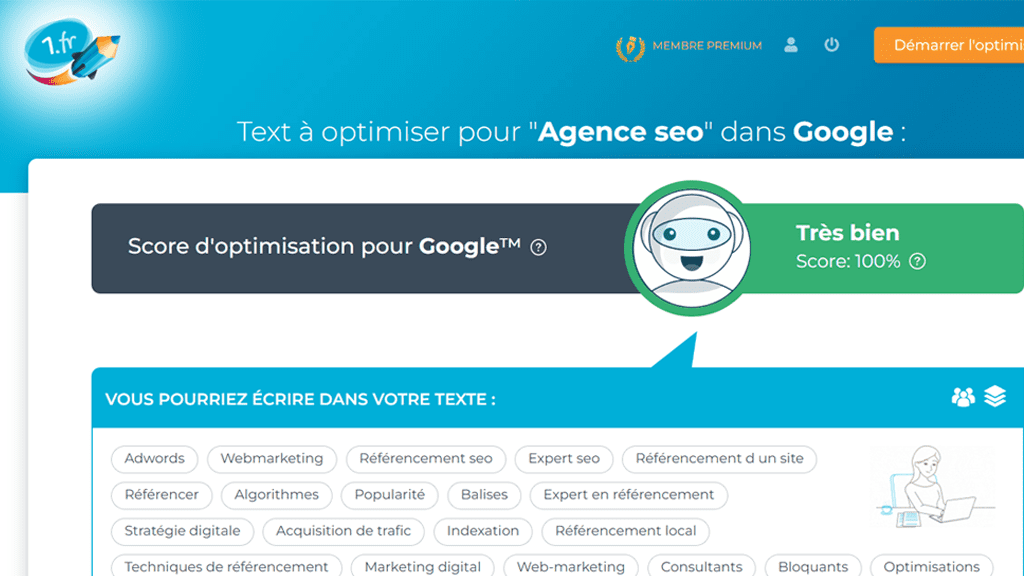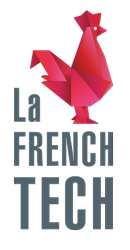1.fr, an editorial audit and optimisation tool
1.fr is a tool to help you optimise the textual content of your pages (websemantics). It analyses and makes recommendations to guide you in your optimisation.
If a page is trying to rank in the search engines for the expression “local referencing“, 1.fr will simulate the analysis that a search engine might make of it and suggest modifications likely to make the article more relevant and richer for the search engines for this query.
It works very simply: you enter the URL of the page to be optimised and then the targeted expression. 1.fr then provides you with a report of this type (taken from the example below):

Once you have this report, you can start by identifying whether the page is correctly optimised for the targeted expression. By clicking on the lexical field concerned, you can obtain suggestions of terms to include in your content to make your page richer.
You can also identify the other lexical fields present on the page. In this way, it is possible to identify parasitic (off-topic) lexical fields that risk making your content less “specific” and therefore potentially more complex for Google’s algorithm to evaluate. By clicking on them, you will also get examples of terms that can be removed to reduce the weight of the lexical field in question.
How does the tool determine lexical fields?
1.fr has analysed the lexical fields and search engine rankings of millions of French-language pages. The conclusion is that the highest-ranked pages generally contain a more extensive lexical field for the targeted expression, compared with lower-ranked pages.
Based on this observation, 1.fr offers a lexical field optimisation service. In concrete terms, if your objective is to position a page on the expression “SEO agency” or “SEO”, 1.fr will tell you whether your “SEO” lexical field is satisfactory, or how to modify it accordingly to strengthen it.

Once optimisation is complete. The lexical field targeted will be the most important on the page in terms of weight and rich enough to stand up to comparison with competing pages.
To do this, the expressions on the page are compared and grouped by affinity. Example: there is an affinity between “apple” and “compote”, but not between “apple” and “brake pad”. In this way, the various lexical fields that make up the page are extracted. The lexical fields extracted are groups of expressions that are closely related to a specific theme.
Example: the “apple” field could contain “compote”, “fruit”, “apple tree”, “harvest”, etc.
When writing content, a copywriter needs to target a specific query, which means writing a rich text that includes a rich and exhaustive lexical field around the targeted query. 1.fr is an invaluable aid at this stage, as it provides a precise view of a page’s lexical fields: the target lexical field (and the interesting cooccurrences to reinforce it), but also the parasitic lexical fields that may be present (and the terms to be removed from the text to obtain an overall result that is more coherent and easier for a robot to interpret).









